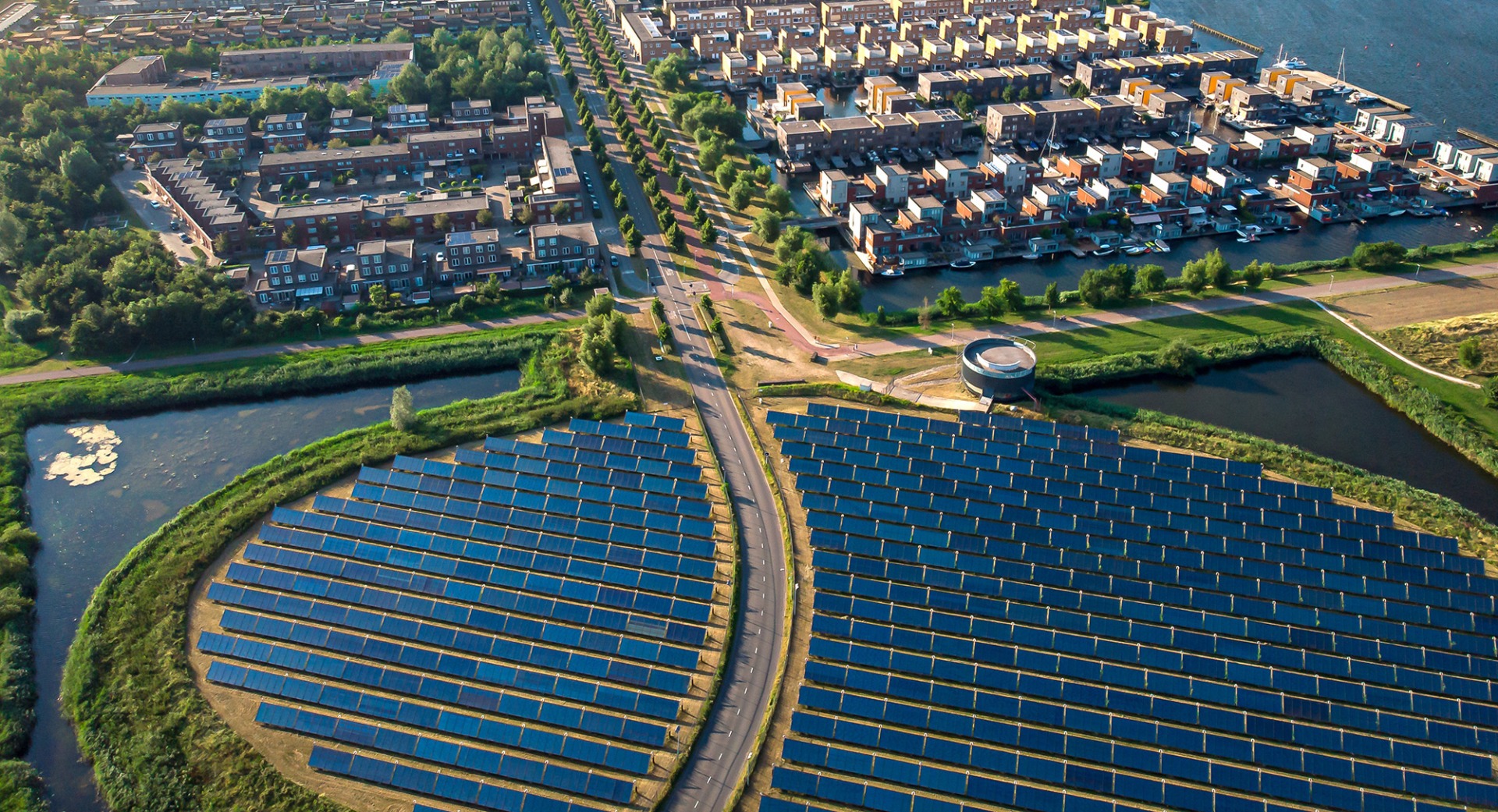Sustainable design and why it matters for a net-zero future
Reading time 9.5 mins
Key Points
- Reaching Net Zero (cutting Greenhouse Gas emissions) by 2050 requires all sectors to be more committed to mitigating climate change
- Sustainable Design is a comprehensive approach to the entire life cycle of a product, service, or policy that helps to drastically reduce its environmental footprint
- The goal is to avoid using non-renewable resources, minimise waste, and create outputs that are safe, healthy, and productive
- New thinking approach where ‘function follows form’ encourages designers to create for sustainability
- Sustainable design and carbon offsets on their own, are not enough to avoid a climate catastrophe
- Governments, major industries and multinationals need to prioritise the planet before profilt

Ben Mazur
Managing Director
The international community aims to achieve net-zero Greenhouse Gas emissions by 2050, and so far, it’s not going well. “Without immediate and deep emissions reductions across all sectors, limiting global warming to 1.5℃ is impossible.” [1] While climate action has been frustratingly slow and disappointing from most public sectors, the private sector and consumer market’s growing commitment to mitigate climate change is encouraging. One of the most favourable outcomes has been Sustainable Design.
It’s a comprehensive and proactive approach to avoiding a catastrophic future that enables both businesses as well as buyers to have a positive impact. The goal of sustainable design is to avoid using non-renewable resources, minimise waste, and create environments/products that are safer, healthier, and more productive [2].
Top criteria for designing sustainably and purchasing responsibly
Making informed decisions from both consumer and producer perspectives is vital. And with sustainable design becoming mainstream, we’re seeing labels such as ‘eco-friendly’, ‘zero waste’, and ‘100% sustainable’ appearing everywhere. But how much of it is authentic, and how can we be sure that businesses and governments aren’t simply greenwashing to make us believe a product or policy is more environmentally safe than it is?
Before racing to buy a new pair of trainers made from ‘ocean plastic’, the buyer should ask: Was the plastic really sourced from the ocean, or ‘ocean bound‘ (i.e. plastic that most likely would have ended up in the sea if it hadn’t been recovered)? What percentage was made from recycled plastic, and how much virgin material was used? Where was the plastic recovered, recycled, packaged, and sold? Once no longer wearable, will they be recyclable?
There’s clearly more to sustainable design than the materials used to make it. Consumers must be informed regarding the criteria that make a product sustainable – demand creates supply. The onus is also on designers, manufacturers, and innovators to ensure they’ve reviewed a product and packaging checklist for sustainability [3] and done everything possible to meet it. Important criteria include:
- The environmental footprint that details the complete life cycle of the product. This includes how/where the raw material was extracted, how the final product will be used (i.e. multiple vs single use), and its disposal. What is the chemical safety of the product and its potential impact on ecosystems?
- A product designed with longevity and quality in mind
- The ease with which the product and packaging can be reused or recycled
- The energy efficiency of the entire production chain
- Design that incorporates alternatives to plastic (e.g. wood, glass, and bioplastics)
- Packaging that’s designed to be compostable or reusable and composed of a single material (mono packaging)
Better still, going the final step further and having the product certified by an independent body is essential. Organisations such as the Green Business Bureau, MODA CIRCULARE and Leadership in Energy and Environmental Design (LEED) are ideal examples. They help businesses and their partners engage actively and communicate their commitment to sustainability. They also provide certification that assures consumers that what they’re buying aligns with their values.
Which comes first, the Function or the Form?
Since the 19th century, form follows function – a phrase coined by architect Louis Sullivan in 1896 – has been a dominant design principle: stating that the shape of a building or object should relate to its function or purpose [4]. Hence the rise of skyscrapers, office cubicles, and ergonomics. Materials used were predominantly selected according to function, with little or secondary importance placed on environmental or social impacts.
However, with priorities shifting toward sustainability, this principle has started to lose its dominance and has motivated a new thinking approach where Function Follows Form [5].
This approach overcomes some drawbacks of design-based innovation, which begins with consumer needs (e.g. chairs that relieve back pain) translated into form (adjustable chairs with lumbar support). The chair’s form is designed to meet the function. The drawback is that consumers often struggle to articulate unmet needs and can’t visualise a product that doesn’t yet exist. However, when function follows form for sustainable design, results with a more significant impact can be achieved:
- By visualising a virtual situation and its potential benefits, unforeseen opportunities can be discovered
- Uncover hidden value in existing products
- New ideas are more practical
- Allows businesses to develop a long-term innovation pipeline rather than a once-off novelty
A case in point is the ‘form follows environment‘ approach taken by a Montessori school which claims to be the most energy-efficient building in Norway. The project was completed by a coalition of architects, engineers, developers, and designers called Powerhouse. Each building is energy positive (it generates more energy than it consumes) and designed to meet the sustainability standards set by the Paris Agreement to achieve a net-zero future:
- The building’s geometry is optimised to harvest solar energy
- Excess electricity is sold to the power grid
- Climate-friendly building materials can be reused, recycled, or disposed of efficiently and eco-sensibly
- Integrated solutions that require collaboration and holistic thinking create added value
Is sustainable design all it takes to avoid a climate catastrophe?
Carrying on with business-as-usual and simply planting trees to offset the carbon emissions we’ve caused doesn’t work [6]. Offsetting schemes are essentially a PR campaign that makes the continued use of fossil fuels more palatable. A newly planted tree can take up to 20 years to mature to the level needed to absorb C02 – so it isn’t the ideal present-moment solution. In addition, they will still be subject to threats such as droughts, wildfires, and deforestation in the meantime, so it isn’t a guaranteed solution either. Add the issues caused by climate colonialism into the equation, and offsetting becomes more offputting.
Furthermore, net zero and carbon neutral are different. A business or activity can technically be carbon neutral (i.e. invests heavily in projects to offset the carbon they create) but still be nowhere near to net-zero as they haven’t accounted for other emissions (e.g. methane, nitrous oxide) that also contribute to Greenhouse Gases.
Even the sustainable design approach, while highly effective, cannot save the world on its own. We cannot innovate our way out of the climate crisis, and we can’t plant our way out, either. Without governments, major industries, and multinational companies prioritising people and the planet before profit, sustainable design simply delays the inevitable.
Or does it? Can sustainable design positively influence fossil-fueled industries to overhaul their business models in a more future-focused way? Do you have a project in the pipeline that you’d like to see designed more sustainably? Share your thoughts and let us know; we’d love to collaborate!
- The evidence is clear: the time for action is now. We can halve emissions by 2030. (2022, April 4). IPCC. Retrieved 27 September 2022, from https://www.ipcc.ch/2022/04/04/ipcc-ar6-wgiii-pressrelease/
- Sustainable Design. (n.d.). GSA. Retrieved 27 September 2022, from https://www.gsa.gov/real-estate/design-and-construction/design-excellence/sustainability/sustainable-design
- Sustainable Products and Packaging Checklist: 20 Tips To Reduce Waste and Support a Circular Economy. (2022, July 27). Green Business Bureau. https://greenbusinessbureau.com/green-practices/products/packaging/sustainable-products-and-packaging/
- Form Follows Function’ Is the Most Famous Phrase in Architecture. (2019, August 1). ThoughtCo. Retrieved 27 September 2022, from https://www.thoughtco.com/form-follows-function-177237
- Function Follows Form (FFF). (n.d.). Systematic Inventive Thinking®. Retrieved 27 September 2022, from https://www.sitsite.com/method/function-follows-form/
- Abelvik-Lawson, H. (2022, April 22). The biggest problem with carbon offsetting is that it doesn’t really work. Greenpeace UK. Retrieved 27 September 2022, from https://www.greenpeace.org.uk/news/the-biggest-problem-with-carbon-offsetting-is-that-it-doesnt-really-work/
We love to talk about new ideas
Do you have an idea? Book a consultation with an expert - it's free, it's confidential and there are no obligations.
+44(0)117 329 3420
[email protected]
Ignitec Technology Centre
1 The Powerhouse
Great Park Road
Bradley Stoke
Bristol
BS32 4RU


